
How to Use DF Player - HW-247A: Examples, Pinouts, and Specs
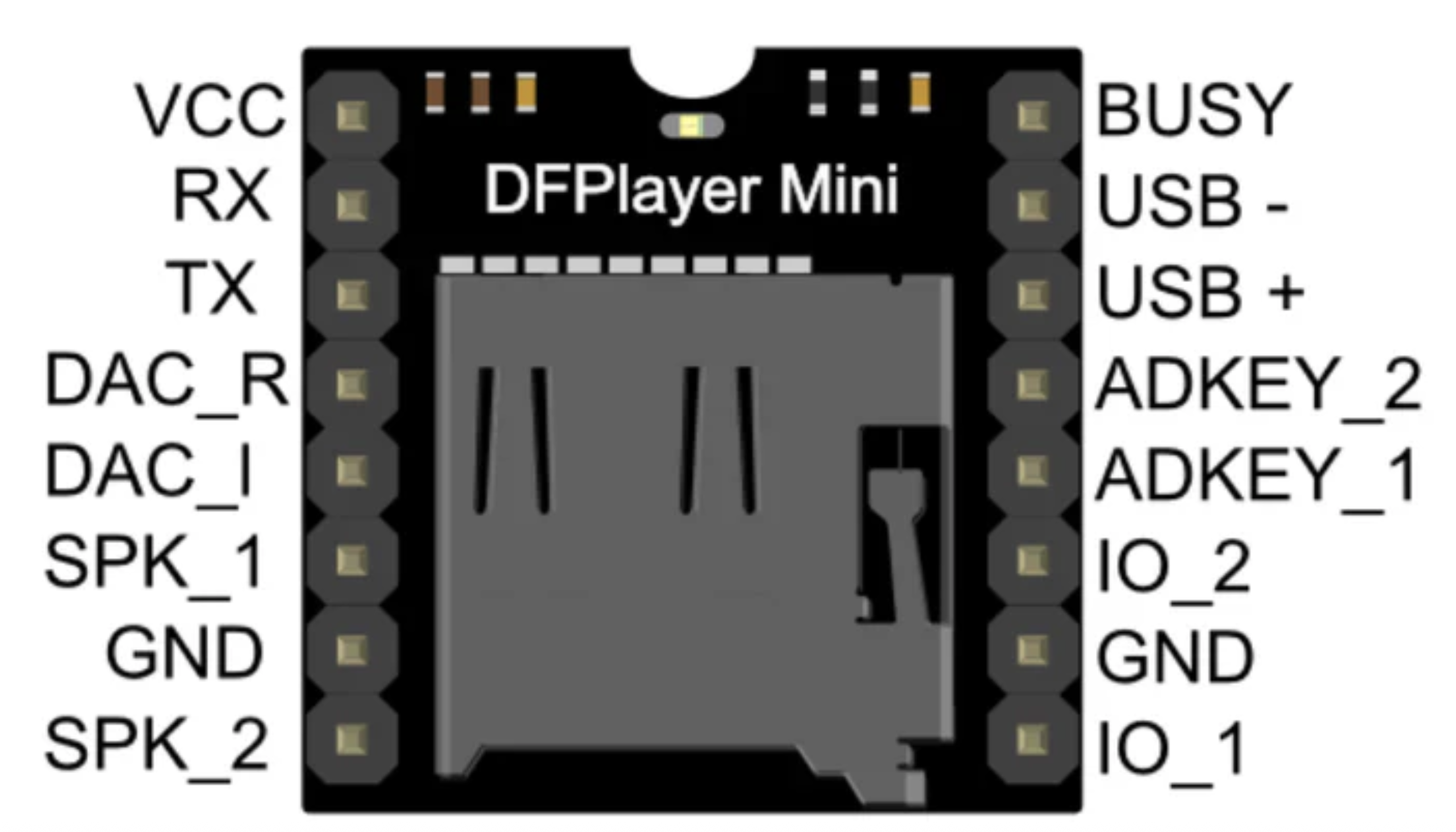
 Design with DF Player - HW-247A in Cirkit Designer
Design with DF Player - HW-247A in Cirkit DesignerIntroduction
The DF Player - HW-247A is a compact and versatile MP3 player module designed for embedded systems and DIY projects. It can play audio files directly from a micro SD card and features a built-in amplifier, making it ideal for standalone audio playback. The module supports various audio formats, including MP3 and WAV, and can be controlled via serial communication, GPIO pins, or even standalone mode.
Explore Projects Built with DF Player - HW-247A
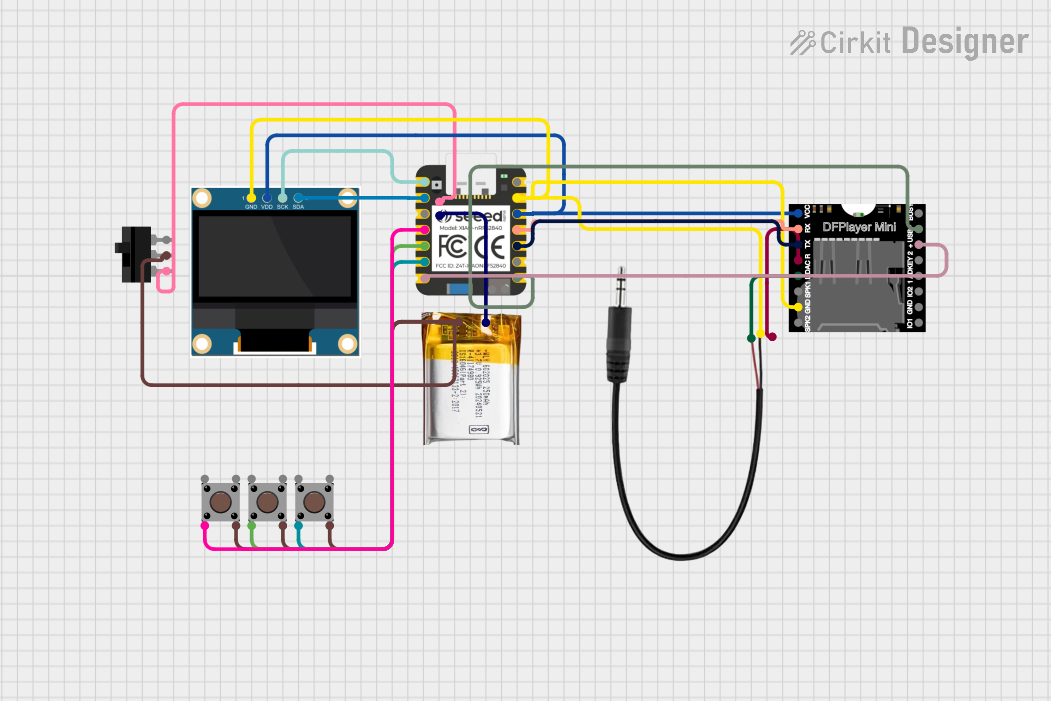
 Open Project in Cirkit Designer
Open Project in Cirkit Designer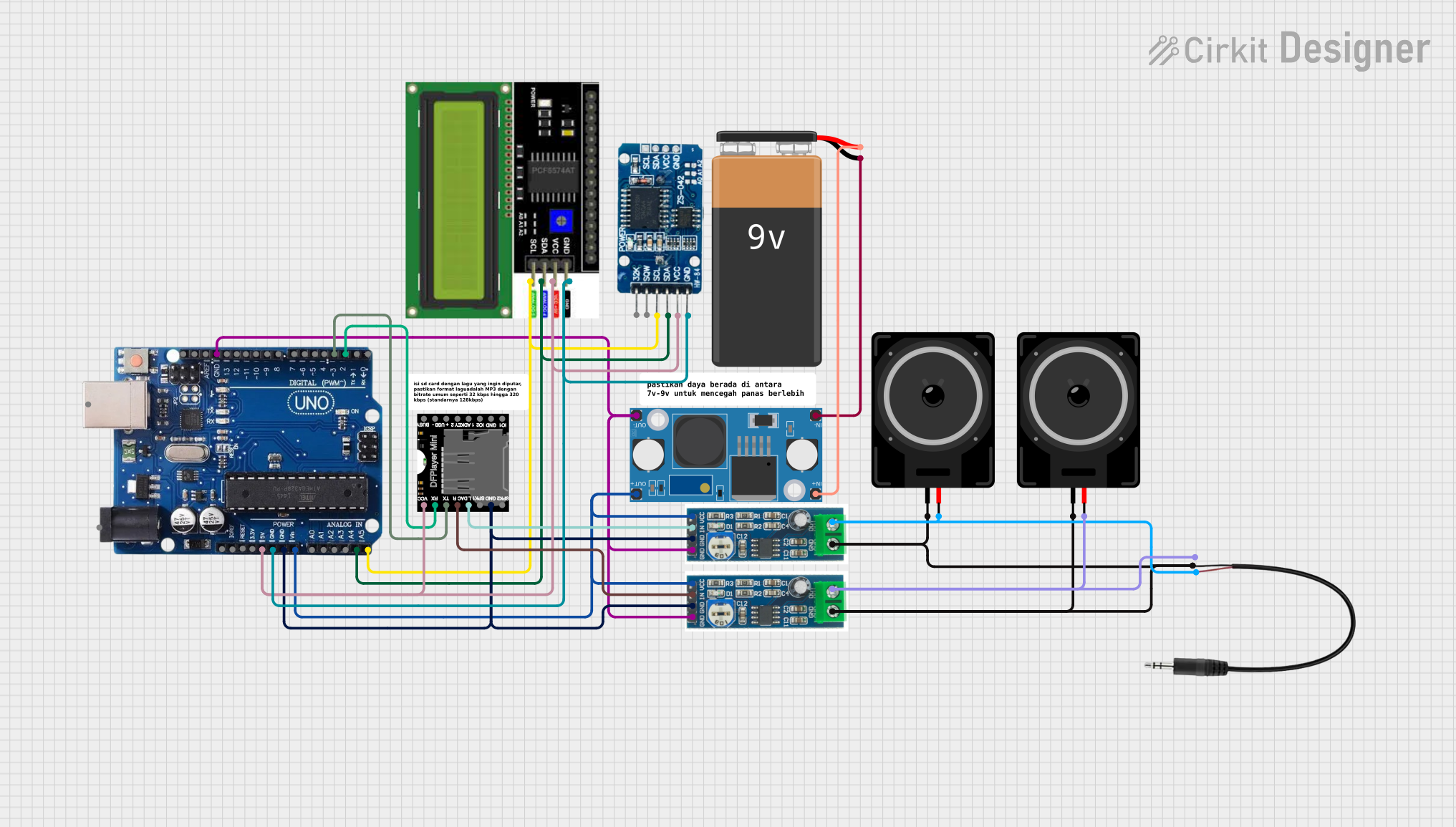
 Open Project in Cirkit Designer
Open Project in Cirkit Designer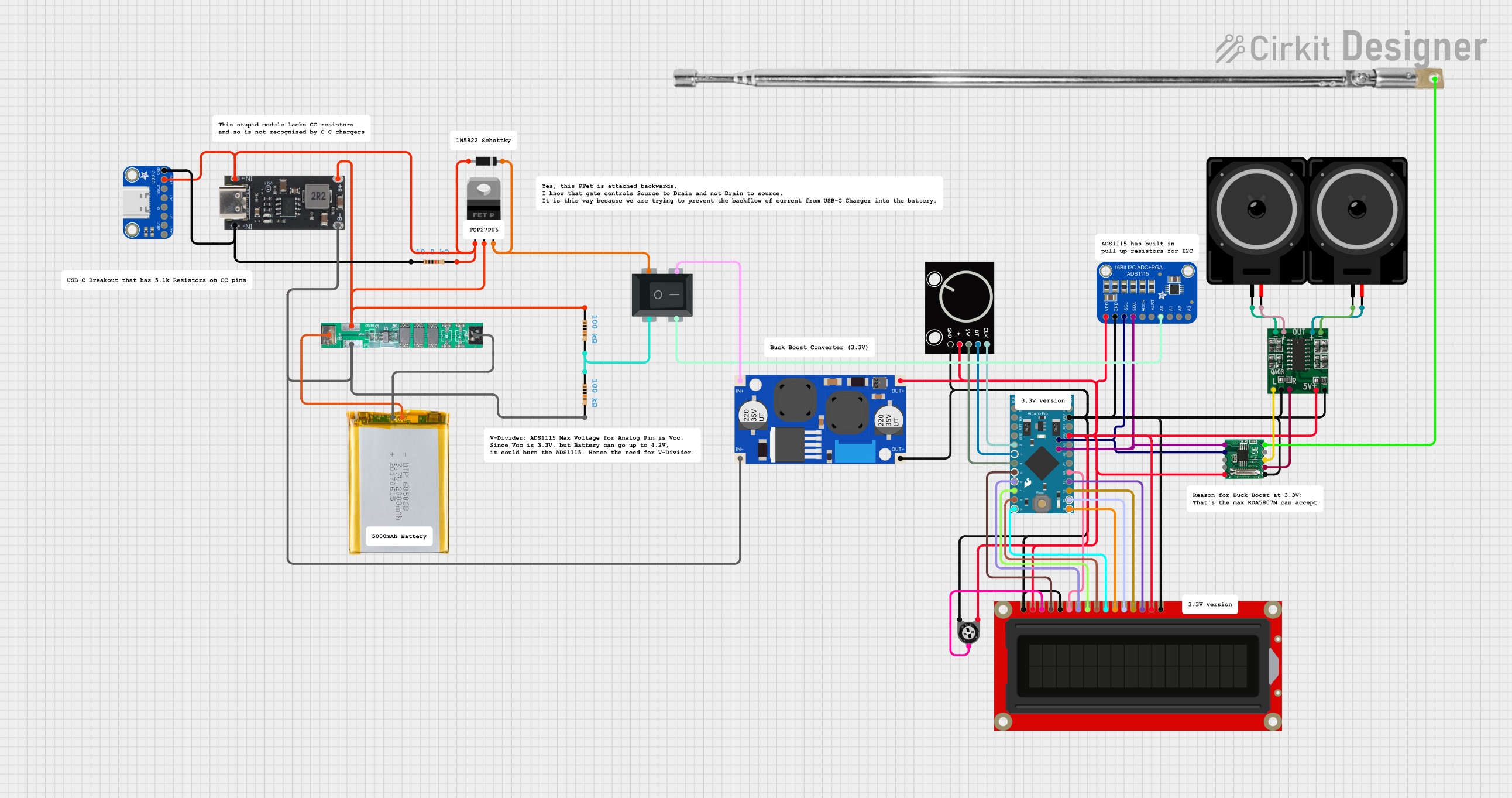
 Open Project in Cirkit Designer
Open Project in Cirkit Designer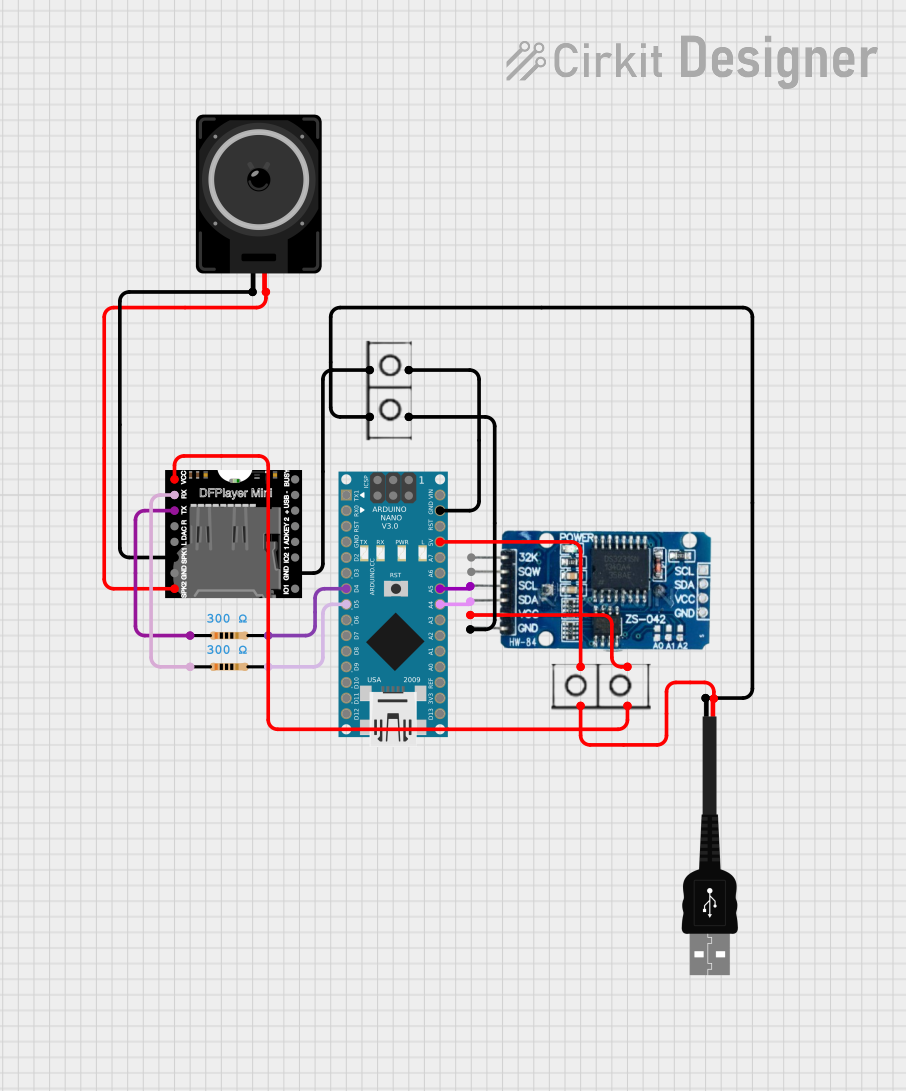
 Open Project in Cirkit Designer
Open Project in Cirkit DesignerExplore Projects Built with DF Player - HW-247A

 Open Project in Cirkit Designer
Open Project in Cirkit Designer
 Open Project in Cirkit Designer
Open Project in Cirkit Designer
 Open Project in Cirkit Designer
Open Project in Cirkit Designer
 Open Project in Cirkit Designer
Open Project in Cirkit DesignerCommon Applications and Use Cases
- Voice prompts and audio feedback in embedded systems
- DIY audio projects, such as jukeboxes or talking devices
- Alarm systems with pre-recorded messages
- Educational projects and interactive exhibits
- Portable audio playback systems
Technical Specifications
Key Technical Details
- Operating Voltage: 3.2V to 5.0V DC
- Current Consumption: 20mA (idle), up to 100mA (playback)
- Audio Formats Supported: MP3, WAV, WMA
- Storage: Micro SD card (up to 32GB, FAT16/FAT32 file system)
- Communication Interfaces: UART (9600 bps default), GPIO control
- Output:
- Stereo audio output (DAC)
- Mono speaker output (3W, 4Ω speaker supported)
- Dimensions: 22mm x 30mm x 11mm
Pin Configuration and Descriptions
The DF Player - HW-247A has 16 pins, but not all are required for basic operation. Below is the pinout:
| Pin | Name | Description |
|---|---|---|
| 1 | VCC | Power supply input (3.2V to 5.0V DC). |
| 2 | GND | Ground connection. |
| 3 | RX | UART receive pin for serial communication. |
| 4 | TX | UART transmit pin for serial communication. |
| 5 | SPK_1 | Positive terminal for mono speaker output. |
| 6 | SPK_2 | Negative terminal for mono speaker output. |
| 7 | DAC_R | Right channel of stereo audio output (line-level). |
| 8 | DAC_L | Left channel of stereo audio output (line-level). |
| 9 | IO_1 | GPIO control pin 1 (used for standalone mode or triggering specific functions). |
| 10 | IO_2 | GPIO control pin 2 (used for standalone mode or triggering specific functions). |
| 11 | BUSY | Output pin that indicates playback status (HIGH = playing, LOW = idle). |
| 12-16 | NC | Not connected (reserved for internal use). |
Usage Instructions
How to Use the DF Player - HW-247A in a Circuit
- Power Supply: Connect the VCC pin to a 3.2V-5.0V DC power source and GND to ground.
- Audio Output:
- For mono output, connect a 4Ω speaker to SPK_1 and SPK_2.
- For stereo output, use DAC_R and DAC_L with an external amplifier or headphones.
- Control Options:
- UART Control: Connect RX and TX to a microcontroller (e.g., Arduino) for serial communication.
- Standalone Mode: Use IO_1 and IO_2 pins to trigger specific audio files without a microcontroller.
- Micro SD Card: Insert a formatted micro SD card with audio files into the module's slot. Ensure the files are named in a sequential format (e.g.,
0001.mp3,0002.mp3).
Important Considerations and Best Practices
- Use a decoupling capacitor (e.g., 100µF) across the power supply pins to reduce noise.
- Ensure the micro SD card is formatted as FAT16 or FAT32 and does not exceed 32GB.
- Avoid connecting both the speaker output and DAC output simultaneously to prevent damage.
- Use a logic level shifter if interfacing with a 3.3V microcontroller to avoid damaging the module.
Example: Connecting to an Arduino UNO
Below is an example of how to control the DF Player - HW-247A using an Arduino UNO:
Circuit Connections
- VCC: Connect to Arduino 5V.
- GND: Connect to Arduino GND.
- RX: Connect to Arduino digital pin 10 (via a 1kΩ resistor for protection).
- TX: Connect to Arduino digital pin 11.
Arduino Code
#include "SoftwareSerial.h"
// Define RX and TX pins for SoftwareSerial
SoftwareSerial mySerial(10, 11); // RX = pin 10, TX = pin 11
void setup() {
mySerial.begin(9600); // Initialize software serial at 9600 bps
Serial.begin(9600); // Initialize hardware serial for debugging
Serial.println("Initializing DF Player...");
delay(1000);
// Send initialization command to DF Player
mySerial.write(0x7E); // Start byte
mySerial.write(0xFF); // Version
mySerial.write(0x06); // Length
mySerial.write(0x09); // Command: Select device
mySerial.write(0x00); // Feedback
mySerial.write(0x02); // Parameter 1: SD card
mySerial.write(0x00); // Parameter 2
mySerial.write(0xFE); // Checksum (high byte)
mySerial.write(0xED); // Checksum (low byte)
mySerial.write(0xEF); // End byte
Serial.println("DF Player initialized.");
}
void loop() {
// Example: Play the first audio file (0001.mp3)
Serial.println("Playing track 1...");
mySerial.write(0x7E); // Start byte
mySerial.write(0xFF); // Version
mySerial.write(0x06); // Length
mySerial.write(0x03); // Command: Play track
mySerial.write(0x00); // Feedback
mySerial.write(0x00); // Parameter 1: High byte of track number
mySerial.write(0x01); // Parameter 2: Low byte of track number
mySerial.write(0xFE); // Checksum (high byte)
mySerial.write(0xF7); // Checksum (low byte)
mySerial.write(0xEF); // End byte
delay(5000); // Wait for 5 seconds before repeating
}
Troubleshooting and FAQs
Common Issues and Solutions
No Sound Output:
- Ensure the speaker is properly connected to SPK_1 and SPK_2.
- Verify that the audio file format is supported (e.g., MP3 or WAV).
- Check the micro SD card for proper formatting (FAT16/FAT32) and file naming.
Module Not Responding to Commands:
- Confirm the RX and TX connections are correct and not swapped.
- Use a 1kΩ resistor on the RX line to protect the module.
- Ensure the baud rate is set to 9600 bps in your code.
Playback Stops Abruptly:
- Check the power supply for stability and ensure sufficient current is available.
- Verify the micro SD card is not corrupted or damaged.
FAQs
Can I use a 3.3V microcontroller with the DF Player? Yes, but use a logic level shifter on the RX pin to avoid damaging the module.
What is the maximum speaker power supported? The module supports up to 3W speakers with a 4Ω impedance.
Can I play audio files in a specific folder? Yes, but you need to use folder-specific commands via UART. Refer to the module's datasheet for details.